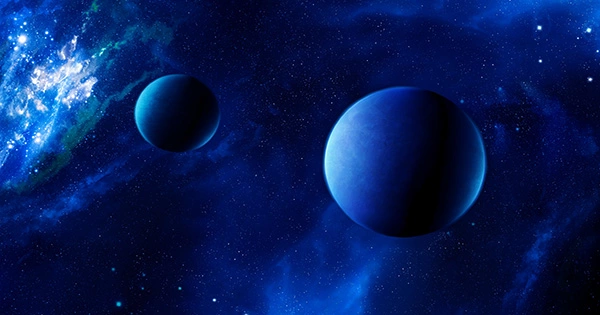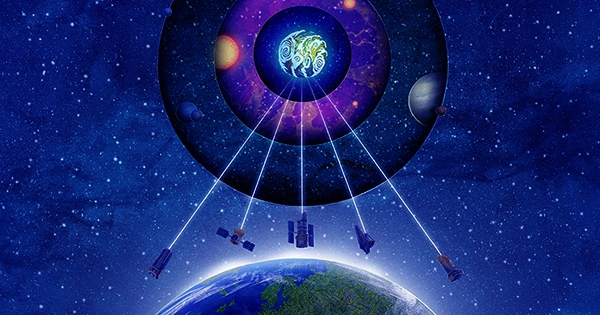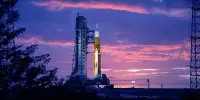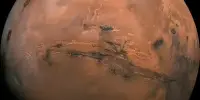Data from the James Webb Space Telescope (JWST) have revealed that an exoplanet orbiting a star in the constellation Leo contains some of the chemical signatures associated with biological creatures on Earth. However, they are only hints. How likely is it that this exoplanet is home to alien life?
Exoplanets are planets orbiting stars other than the sun. K2-18b is the name of the planet in dispute. It was named after the first planet discovered around the red dwarf star K2-18. There is also a K2-18c—the second planet discovered. The star itself is dimmer and cooler than the sun, which means that the planet would need to be considerably closer to its star than we are to get the same level of light as we do on Earth.
In astronomical terms, the system is just about 124 light-years away. So, how are things on this exoplanet? This is a challenging question to answer. We have telescopes and techniques that can tell us about the star and how far away the exoplanet is, but we can’t get direct photographs of it. We can, however, iron out a few kinks.

Calculating how much light strikes K2-18b is critical for determining the planet’s potential for life. K2-18b orbits its star closer than Earth does: it is around 16% of the distance between Earth and the sun. Another metric we require is the star’s power output, or the total quantity of energy it emits per second. The power output of K2-18 is 2.3% that of the sun.
Using geometry, we can calculate that K2-18b receives approximately 1.22 kW of solar electricity per square meter. This is comparable to the 1.36 kW of incoming light on Earth. Although K2-18 emits less energy, it balances out because the planet is closer. Thus far, so good. However, the incoming light calculation ignores clouds and how reflective the planet’s surface is.
When considering life on other planets, one prominent concept is the habitable zone, which suggests that water will be liquid at an average surface temperature, as this condition is believed crucial for life. The Hubble Space Telescope discovered indications of water vapor in K2-18b in 2019, implying that liquid water is present on the surface. There are now big oceans thought to exist in the world.
This sparked some interest at the time, but without more evidence, it was just an interesting result. JWST has now been reported to have detected carbon dioxide, methane, and perhaps the molecule dimethyl sulfide (DMS) in the atmosphere. The discovery of DMS is significant because it is exclusively produced by algae on Earth. There is currently no known way for it to be created naturally without the presence of a life form.
Is there life on K2-18b?
All of these indicators point to K2-18b as a possible location for alien life. But it’s not quite that straightforward because we have no notion of how accurate the results are. The approach used to identify what is in an exoplanet’s atmosphere requires light from another source (often a star or galaxy) to pass past the edge of the atmosphere and be viewed by us. Any chemical substance that absorbs light at specific wavelengths can be recognized.
Consider it like looking through a glass tumbler at a light bulb. When it’s empty, you can see right through it. You can still see through it if you fill it with water, although there are some optical effects and coloring, which are the equivalent of hydrogen and dust clouds in space. Now imagine you poured in red food dye—this may be the equivalent of a planet’s major chemical constituent.
However, most atmospheres contain a variety of substances. Looking for any of them would be analogous to pouring 50—likely many more—differently colored food colors into your tumbler and attempting to determine how much of each color is present. It is an extremely challenging process with a lot of space for subjective evaluation and blunders. Furthermore, the light passing through the atmosphere contains a signal of the star’s chemical composition, confounding the research even further.
Only a few years ago, there was a rush of curiosity in whether life existed on Venus, as investigations revealed the presence of phosphine gas, which microorganisms can create.
Several investigations, however, effectively disputed this claim. In astronomical words, if there may be uncertainty about what is in the atmosphere of a planet that is right next door, it’s easy to see why examining a planet that is many times further away is a challenging task.
What can we conclude from this?
Life on exoplanet K2-18b is unlikely, but not impossible. These findings are unlikely to affect anyone’s perspective or confidence in extraterrestrial life. Instead, they show an increasing ability to see into worlds other than our own and gather more information.
JWST’s power is not just in capturing spectacular images, but also in giving more detailed and accurate data on celestial objects. Knowing which exoplanets have water and which do not could help scientists understand how the Earth began.
Studying the atmospheres of gas giant exoplanets can inform the study of analogous worlds in the solar system, such as Jupiter and Saturn. Identifying CO2 levels also shows how an enormous greenhouse effect may influence a planet. This is the true power of analyzing planetary atmospheric composition.
















